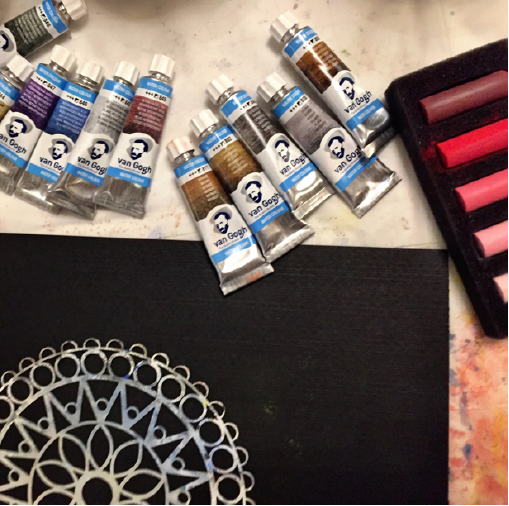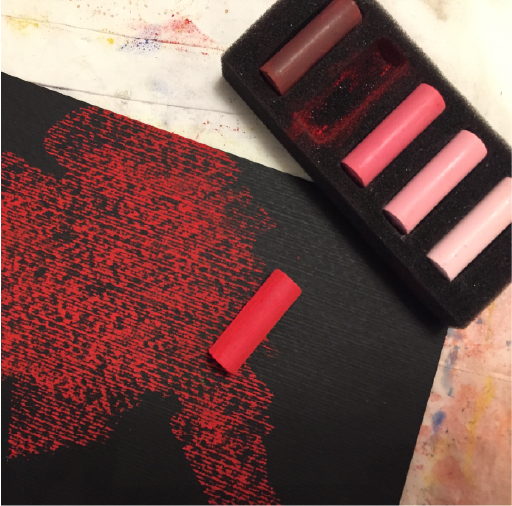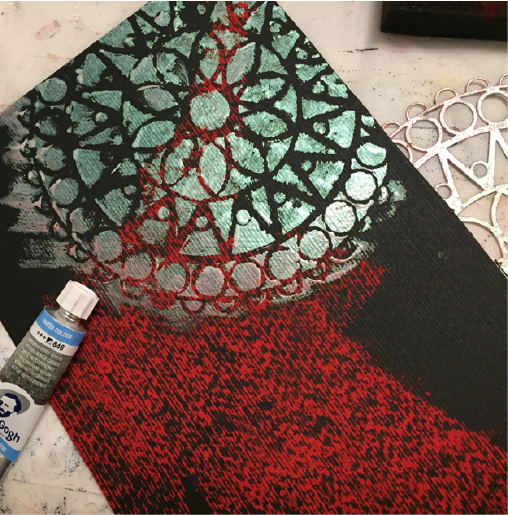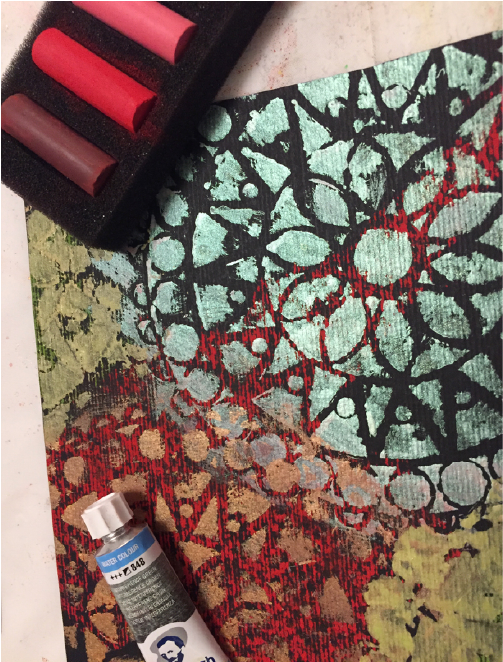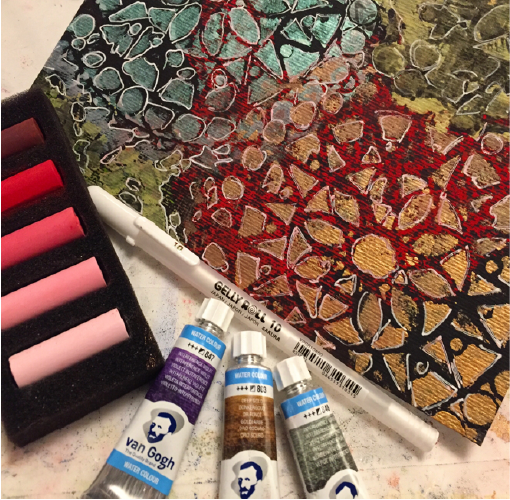Mixed Media Project with Rembrandt Soft Pastels and Van Gogh Watercolors
Watch Royal Talens North America Art Education Director Jeff Olson demonstrate how to use the new Van Gogh interference and metallic watercolors with our Rembrandt soft pastel micro sets to create stunning, eye-catching effects! Then download the project sheet so that you can try it out at home!
Many artists are surprised to learn that soft pastels can be mixed with water media for dramatic effects. By combining Van Gogh Watercolors with Rembrandt Pastels, you can achieve a variety of marvelous outcomes. And with the new Van Gogh Interference and Metallic Colors on Van Gogh Black Watercolor paper, the end result is even more stunning.
Materials
Van Gogh Interference & Metallic Water Colors
Rembrandt Soft Pastels
Van Gogh Black Watercolor Paper
Watercolor Brushes assorted
Stencils
Mixing Palette
Water Container(s)
Paper Towels
Sponges (optional)
Set Up
Cover table if needed.
Lay out paint, stencils, brushes, palette, and paper for easy access to participants.
Have plenty of water containers for brush cleaning and paper towels for general clean up throughout.
Make enough room for individuals to work side by side, sitting or standing.
Have a trash can available with easy access.
Techniques
Start by selecting the color pastel you would like to use.
You can begin by covering a portion of the surface with the pastel. One or more colors can be applied.
Next, using the stencil, and placing it off center, paint in with your choice of Interference color mixed with a primary color.
Apply the paint over the image using whichever technique you prefer: dry brush, scumbling, broken color, glazing (transparent color), or blending (using two colors side by side and blending them before they dry). You can also use a sponge or paper towel to dapple or spread color over the stencil.
You can wait until your paint is dry to the touch, or you can paint wet-into-wet as you begin a second layer. Use the stencil in a different position. This time only use the Interference color.
For the third application, again repositioning the stencil, apply one of the Metallic colors.
Now go in with the pastel again, while the surface is still wet or dry, and highlight areas you want to emphasize.
Optional – Go in with a Sakura Gelly Roll White pen, #10, and outline shapes you would like to define.
Repeat the above process or mix up your technique to create as many layers as you like.
Have fun!
Tips
Stencil brushes can be easier to work with as they are flat tipped and lay the paint down evenly.
You can use masking tape to hold your stencil in place.
Don’t overload your brush with paint, start out with a small amount and add as needed so the image won’t bleed and for faster drying times.
Angle your brush toward the center of the image verses the edge.
Wipe off your stencil between paint applications.
Use complementary colors for a more dramatic effect (red-green, blue-orange, yellow-violet).

